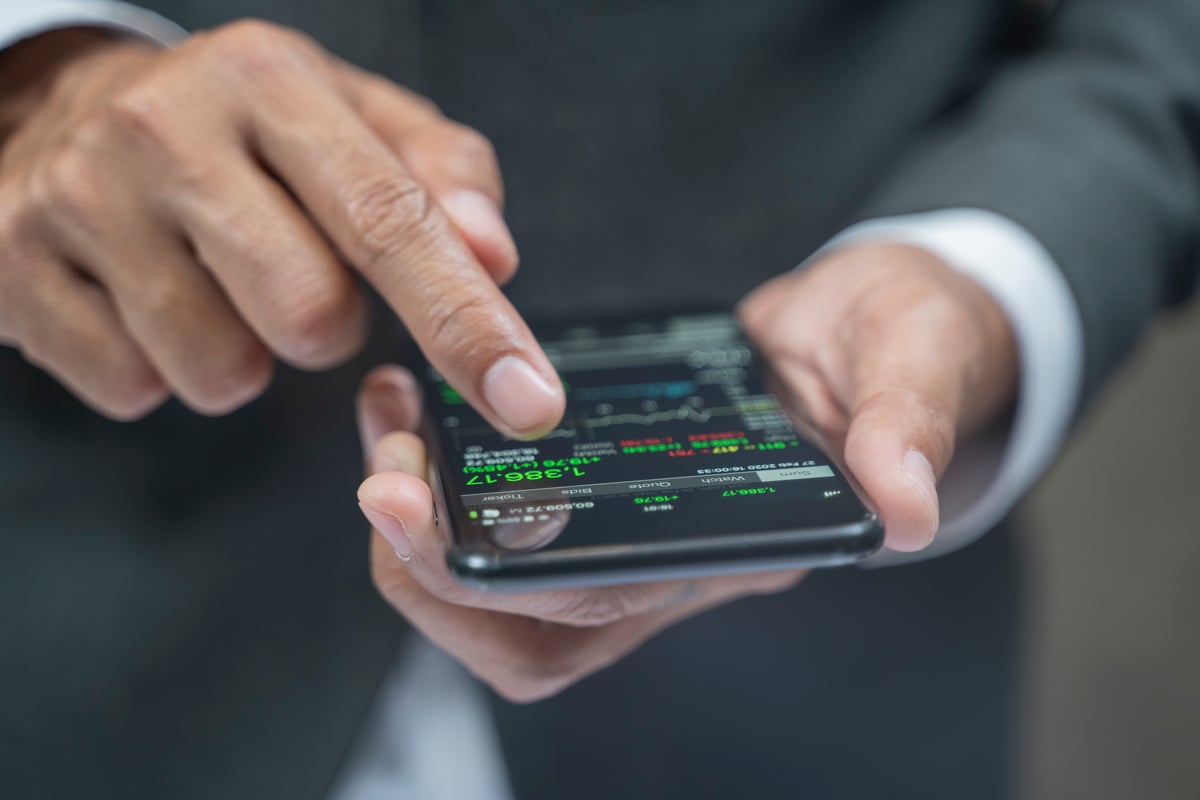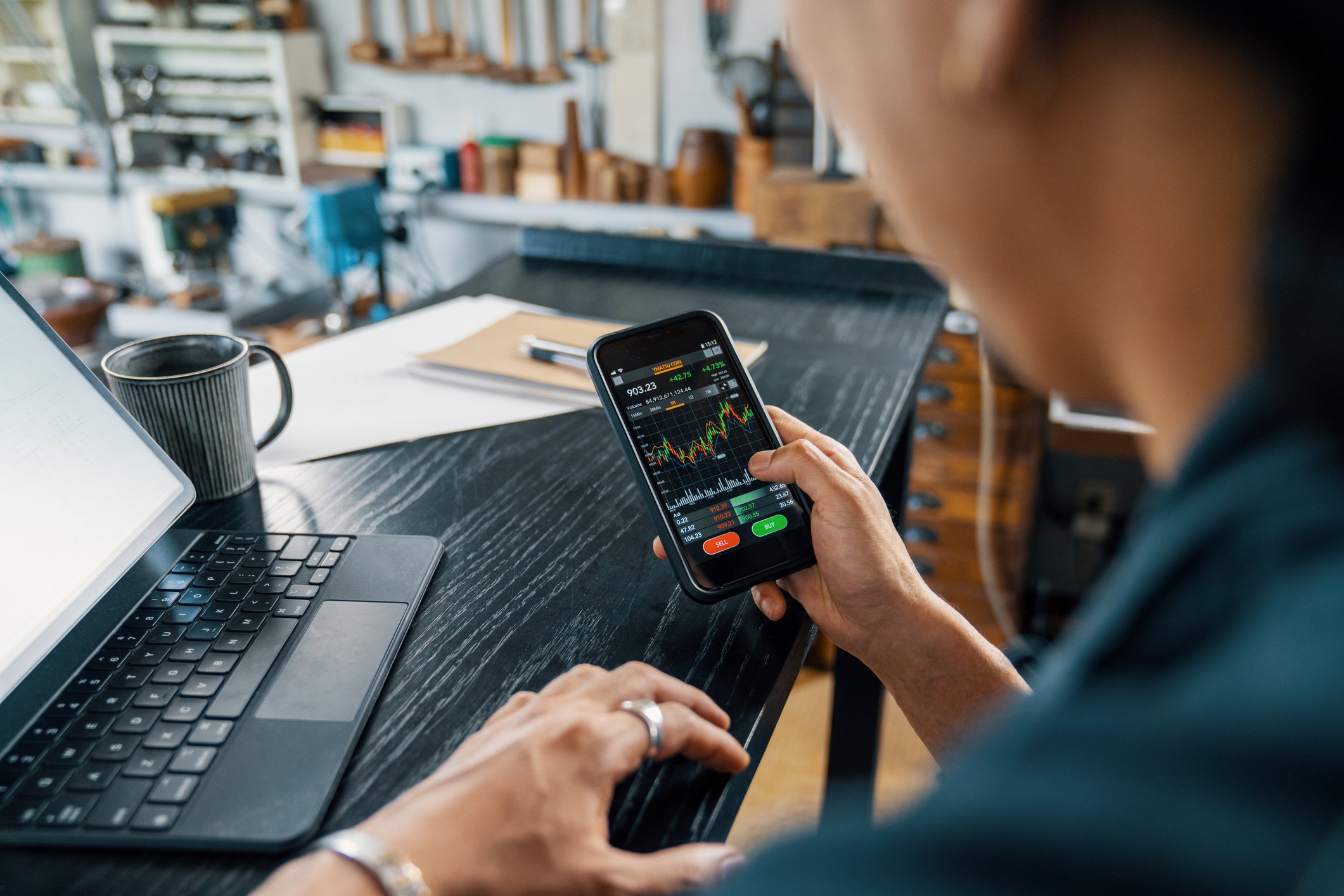Some of the best companies for investors are ones that are truly disruptive. We've seen a few -- Amazon reshaped retail, Netflix reinvented video, Airbnb changed how we vacation, and Uber Technologies and Lyft took on the taxi industry.
I think Robinhood Markets (HOOD +0.17%) can safely be added to the list of disruptors. The fintech company was in the right place at the right time when it began offering commission-free stock trading and a user-friendly app that made investing fun. Robinhood essentially opened the stock market to retail traders, who formerly had to pay a commission to brokers to do any trades. This forced brokerages to follow suit with their own commission-free trading practices.
Robinhood has been one of the best stories on Wall Street in 2025 as well -- surging nearly 300% this year -- and is trading at all-time highs. While this is a high-flying stock with a steep valuation, there are some major tailwinds that should continue to power Robinhood for the next several quarters. Let's break down this disruptive fintech.

Image source: Getty Images.
About Robinhood
Robinhood is a financial services company that offers accounts to trade stocks and cryptocurrencies on its web-based platform and app. Users can trade whole or fractional shares, as well as do options and futures trades. The company claimed 26.7 million funded customers in August, up 10% from a year ago. Total platform assets were $303.9 billion, up 112% from August 2024.
Results in the second quarter echoed the company's dynamic growth. Revenue totaled $989 million, up 45% from a year ago; net income of $386 million was up 105% from the same period in 2024. Robinhood posted earnings per share of $0.42, which was up 100% from last year.
Robinhood is also earning more from its users. The company reported average revenue per user of $151, which was up 34% on a year-over-year basis. And the number of Robinhood Gold subscribers, the company's premium paid subscription service, increased 76% to 3.5 million. Robinhood is seeing steady growth, which is attractive to investors.
|
Period |
Funded Customers (in millions) |
Robinhood Gold Subscribers (in millions) |
Total Platform Assets (in billions) |
|---|---|---|---|
|
Q2 2024 |
24.2 |
1.98 |
$140 |
|
Q3 2024 |
23.3 |
2.19 |
$152 |
|
Q4 2024 |
25.2 |
2.64 |
$193 |
|
Q1 2025 |
25.8 |
3.19 |
$221 |
|
Q2 2025 |
26.5 |
3.48 |
$279 |
Data source: Robinhood.
However, there are two other trends that make me excited about Robinhood stock right now.
Robinhood's tailwinds
Robinhood has a good business model. It makes money on its commission-free trades by routing them through market makers to execute the order. Those companies pay Robinhood a small fee as compensation. And it makes money trading cryptos on the spread -- the small differences between what they charge a customer and the price at which they acquired an asset.
In March, it launched a new revenue stream in prediction markets. Prediction markets let investors trade based on what they think will happen with future events. Currently, there are nearly 600 events available on the company's prediction markets hub, including professional hockey, baseball, and football, as well as whether the Federal Reserve will cut rates this month and the future price of Bitcoin. Robinhood charges a commission of $0.01 per contract bought or sold.
Robinhood told Bloomberg that it plans to expand the prediction markets hub globally and has already started talks with regulators in the U.K. This could be a giant step for Robinhood and be the next step in the company's disruptive evolution.
In addition, Robinhood launched a tokenization effort in June, making more than 200 tokenized U.S. stocks available to its customers in the European Union. Tokenization is the conversion of an asset, such as a stock, into digital tokens that can be traded on a blockchain. The tokenization move pushed Robinhood stock to a new high, but it appears the momentum is just beginning.

NASDAQ: HOOD
Key Data Points
Speaking at a cryptocurrency panel in Singapore recently, Robinhood CEO Vlad Tenev predicted that most major markets will have a framework for tokenized assets, including stocks and real estate, in the next five years.
"Tokenization is like a freight train. It can't be stopped, and eventually it's going to eat the entire financial system," he said. While that may be some hyperbole, it can't be argued Robinhood's tokenization push is paying initial returns -- and any expansion will be good for the platform and the company.
The bottom line
Robinhood has a price-to-earnings ratio of 73 -- frothy for sure, but near the bottom of its 10-year range. Robinhood has always been an expensive stock, but that's what you'd expect from a fintech that's changing its industry.
When you look at the tailwinds this company has going for it -- the growing customer base, increased assets, tokenization, prediction markets, and its expansion into Europe -- you can't ignore the stock's momentum. It's a buy right now.





